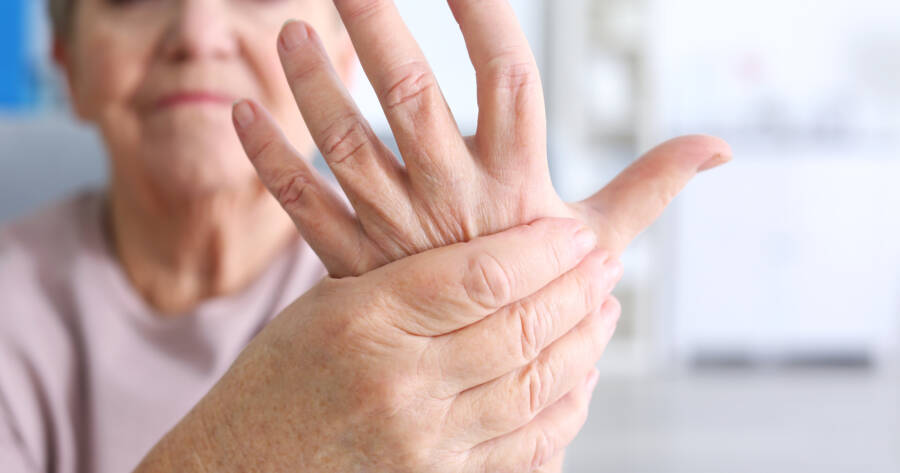Managing rheumatoid arthritis effectively involves a combination of treatments. Medications like NSAIDs, DMARDs, and biologics help reduce inflammation and slow disease progression. Physical therapy, regular exercise, and lifestyle changes play a crucial role in treatment.
Symptoms and Causes of Rheumatoid Arthritis
Rheumatoid arthritis (RA) can be difficult to diagnose in its early stages because the signs and symptoms are similar to other diseases. In addition to joint swelling, pain, and stiffness, it causes fatigue, fever, and weight loss. The smaller joints of the hands and feet are affected in the initial stages. As the disease progresses, symptoms can worsen and change.
The intensity and severity of the signs and symptoms will vary throughout the course of the disease. While the cause of RA is unknown, there are several risk factors. These include genetics and environmental factors. Women and individuals between the ages of 40 and 60 are more likely to develop rheumatoid arthritis.
Treatments for Rheumatoid Arthritis
The objective of rheumatoid arthritis treatment is to prevent inflammation that causes pain and joint damage, improve physical function, and reduce the risk of long-term complications. While there is no cure, remission of the disease is possible. Treatment of the condition generally requires the use of various therapies.
Medications
The types of medications recommended by your doctor will depend upon the severity of symptoms and the length of time that you’ve had the disease. Nonsteroidal anti-inflammatory medications (NSAIDS) relieve pain and reduce swelling. You may take over-the-counter medications like ibuprofen or a stronger prescription-strength drug.
In addition to reducing pain and swelling, corticosteroids slow joint damage. In some cases, your doctor may prescribe disease-modifying anti-rheumatic drugs or biological agents that target the immune system.
Physical Therapy and Alternative Remedies
Physical or occupational therapists can provide exercises designed to keep joints flexible. A therapist may also suggest ergonomic techniques to perform daily tasks that relieve stress on the joints.
A variety of devices can improve your mobility. These include splints, braces and customized shoe inserts that help to stabilize your joints. Canes and crutches may make it easier to walk by taking the weight off your joints.
Rheumatoid arthritis sufferers commonly use complementary remedies, such as acupuncture, chiropractic care, and massage therapy. Some individuals also engage in activities like tai chi and meditation to alleviate the mental stress and control the pain. Small studies have shown that stretching, gentle exercises and deep breathing techniques can reduce arthritis pain. Learn more about what each of these therapies offer those suffering from RA.
Surgery
If medication and other treatment options fail to slow or prevent joint damage, your doctor may recommend surgery to repair your damaged joints and restore their normal function.
Natural Treatments for Rheumatoid Arthritis
Along with proper rest, stress management, and regular exercise, eating a healthy diet can improve quality of life. When a flare-up occurs, rest as much as possible as overexertion can worsen your symptoms and cause further damage. Exercise can promote general health and flexibility while strengthening muscle weakened by RA.
Hot and Cold Therapies
Tense muscles may benefit from an application of heat, including a hot bath. You can enhance the therapeutic effects of your bath by adding Epsom salts to the water and then soaking for 20 minutes. Warm compresses or a heating pad set on low can provide relief.
Pain sensations can be dulled by the numbing effect of a cold pack or soaking the affected joint in cold water. Ice packs can reduce swelling and inflammation and may reduce muscle spasms. A hot-cold cycle can be particularly beneficial.
Anti-Inflammatory Food and Supplements
Studies have shown that certain foods can lessen the inflammation associated with rheumatoid arthritis. Fish and plant oils have anti-inflammatory properties and can reduce pain and morning stiffness. Increasing your intake of fruits and vegetables will boost important nutrients like dietary fiber, vitamins, minerals, and stress-reducing antioxidants.
Many herbs and spices possess anti-inflammatory properties as well. When preparing meals, add ingredients like garlic and turmeric as well as ginger, cinnamon, and cayenne. These can reduce pain, swelling, and stiffness in those suffering from RA.
Get Relief
Managing rheumatoid arthritis is a journey, and it’s one that’s continually advancing with new treatment options and discoveries. Don’t hesitate to explore the internet to keep up with the latest developments — your perfect treatment plan is waiting for you.
